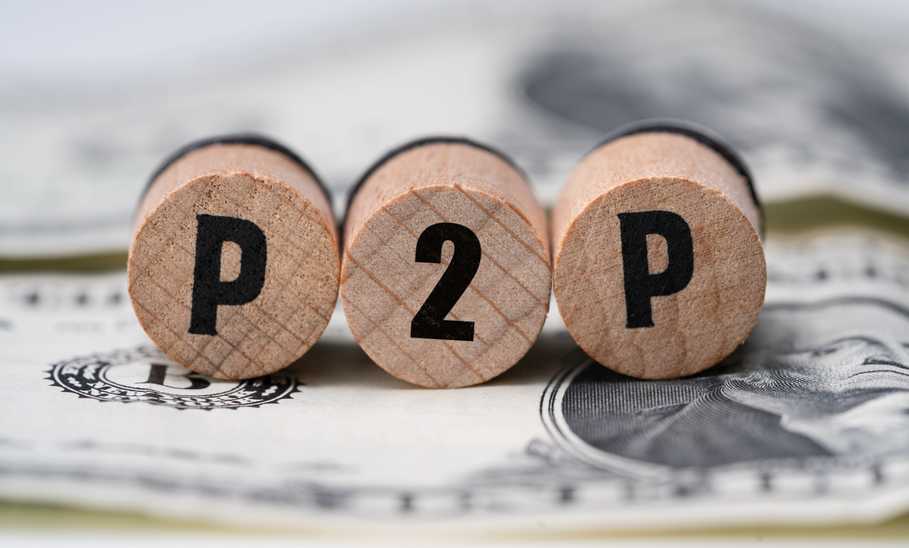- Open to accredited and non-accredited investors
- Fully vetted properties
- Attractive returns
- Automatic investing option
5 Best Peer-to-Peer Lending Platforms for Investors

Our evaluations and opinions are not influenced by our advertising relationships, but we may earn a commission from our partners’ links. This content is created by TIME Stamped, under TIME’s direction and produced in accordance with TIME’s editorial guidelines and overseen by TIME’s editorial staff. Learn more about it.
Peer-to-peer (P2P) lending, also known as marketplace lending, has existed since 2005, when fintech company Zopa launched the first P2P lending platform. Since then, P2P lending has grown into a multibillion-dollar industry, offering interesting opportunities for both individual investors and borrowers.
Founded in 2012, RealtyMogul offers investments to accredited and nonaccredited investors through public, non-traded real estate investment trusts (REITs) and private placements. Its intuitive online dashboard makes browsing investment opportunities easy, conducting due diligence, investing, and tracking performance.
Founded in 2012, Upstart uses artificial intelligence (AI) to assess the creditworthiness of borrowers. It offers personal loans to borrowers with good to excellent credit at rates that are typically lower than traditional banks offer.
Launched in 2005, Prosper was the first P2P lending platform in the U.S. Loans are assigned a rating from AA (lower risk, lower return) to HR (higher risk, higher return). Investors can use the auto-invest tool to create a portfolio based on their preferred rating mix and automatically reinvest earnings.
Kiva was founded in 2005 as an international non-profit organization that connects lenders with borrowers in low and middle-income countries to fund small businesses, healthcare, and education. Unlike other P2P platforms, lenders don’t receive interest from the loans they fund, so the organization is aimed at altruistic investors.
Founded in 2010, Funding Circle is the largest online small business loan provider and one of the world’s best-capitalized lending platforms. It offers business loans, invoice financing, and property development loans with funding in as few as 48 hours.
When comparing your P2P lending options, focus on platforms that offer the types of loans you want to invest in. Review the fine print so you understand the fees. Platforms may charge fees to the lender, borrower, or both. Research each platform’s track record regarding loan originations, default rates, investor returns, and its online reputation.
Also, be sure you meet the investor requirements. For example, some platforms only work with accredited investors. The SEC defines an accredited investor as someone having a net worth of at least $1 million (excluding their primary residence) or an annual income of more than $200,000 (individually) or $300,000 with a spouse or partner in each of the previous two years.
Real estate crowdfunding apps match real estate developers with interested investors who pool their capital to fund projects with as little as $500. If everything goes well, investors get debt or equity in the project plus monthly or quarterly distributions.
Alternative investments are assets other than stocks, bonds, or cash. They include real estate, private equity, venture capital, fine artwork, and cryptocurrencies. Alternatives allow you to diversify your portfolio while offering higher potential returns than traditional investments. Online platforms like Yieldstreet offer various alternative investments.
Fine art investing has traditionally been reserved for the ultra-wealthy. However, online platforms like Masterworks let a broader audience tap into the fine art market by offering fractional art shares—while taking care of the research, acquisition, and management.
With P2P lending, loan funds come from individual investors instead of institutions like banks or credit unions. Online P2P lending platforms connect borrowers and lenders, streamlining the loan process for borrowers and giving lenders the chance to earn higher returns on simple cash investments.
Borrowers can use a personal loan for debt consolidation or home improvements, though most platforms cap these loans at $35,000. The best peer-to-peer personal loans offer flexibility and attractive interest rates.
P2P platforms don’t generally offer auto loans. However, the loan size may be adequate for automobile purchases, making P2P loans a good option for borrowers having trouble qualifying for auto loans elsewhere.
P2P business loans may be easier to qualify for than traditional bank loans, but they aren’t typically used for startup cash. A business generally needs a track record of at least six months to qualify. These loans may also be secured (collateralized) by a general lien on the business.
Depending on the platform, borrowers may be able to use funds for current education expenses or to consolidate existing student loan debt.
Borrowers can use medical loans to help pay for healthcare-related bills not covered by insurance, including copays and deductibles. Funds can also go toward procedures that insurance policies typically exclude, such as sleep disorder remedies, fertility treatments, and elective (cosmetic) surgeries.
P2P lenders may approve borrowers with lower credit scores or thinner credit files than traditional banks and lenders require. This can be especially helpful to people who otherwise would be pushed out of the mortgage market.
Some P2P loan platforms are open to anyone who wants to invest money by making loans through them. Others require that you be an accredited investor, someone who meets specific net worth income, and/or other criteria designed by the Securities and Exchange Commission (SEC) to protect less affluent or knowledgeable investors from getting in over their heads. This is particularly important when deciding whether to lend money to people or businesses with less than excellent credit scores.
Focus on platforms offering the types of loans you want to invest in, then compare fees, investor requirements, and track records.
Each platform has a different process. Still, you’ll likely create an account, answer questions about your risk tolerance and lending goals, and deposit the cash you want to invest.
You can view available loans on the platform. Some platforms match you to prospective borrowers based on user-defined preferences, while others let you research and select loans manually. Perform the same due diligence as you would with any investment.
Interest payments from borrowers can offer passive income, especially if you have a diversified portfolio of loans. Borrowers make fixed monthly payments through the P2P platform. If the borrower misses a payment, the platform (not the investor) will collect on the loan directly or refer it to a third-party servicer or collection agency.
As with any investment, consider working with a financial advisor for assistance with asset allocation, risk management, or creating the best strategy to fit P2P lending into your investment portfolio.
According to Acumen Research and Consulting, the global peer-to-peer lending market is projected to grow from $82.3 billion in 2021 to more than $804 billion by 2030. The company cites increased credit availability as the key driver of the P2P lending market. P2P platforms often have lenient lending requirements compared to traditional banks and lenders, making credit available to borrowers who might not otherwise qualify for a loan. In this way, P2P investing offers a way to help other consumers directly while still earning attractive returns.
Peer-to-peer lending can be an attractive investment offering monthly income, competitive yields, diversification, and a low barrier to entry. However, as with any investment, it’s essential to consider the drawbacks, including the risk of default and lack of liquidity. Limiting peer-to-peer investments to a relatively small percentage of your fixed-income assets is generally advisable.
P2P lending offers higher potential earnings than keeping your cash in a savings account or CD, but risks exist. For example, you can lose all your money if the platform fails. There is also the risk of default if the borrower stops repaying the loan. Many peer-to-peer lending platforms vet borrowers, which helps lower this risk. Consider dividing your investment dollars between multiple borrowers to diversify risk, and never invest money you can’t afford to lose.
It’s possible to earn competitive annual returns that outperform fixed-income investments. According to alternative investment platform Yieldstreet, loan terms average between three and five years, with interest rates averaging 6.99%.
The minimum investment for peer-to-peer lending varies by platform. Some platforms allow you to get started with as little as $25, while others have higher minimums that could be several thousand dollars or more.
The information presented here is created by TIME Stamped and overseen by TIME editorial staff. To learn more, see our About Us page.



